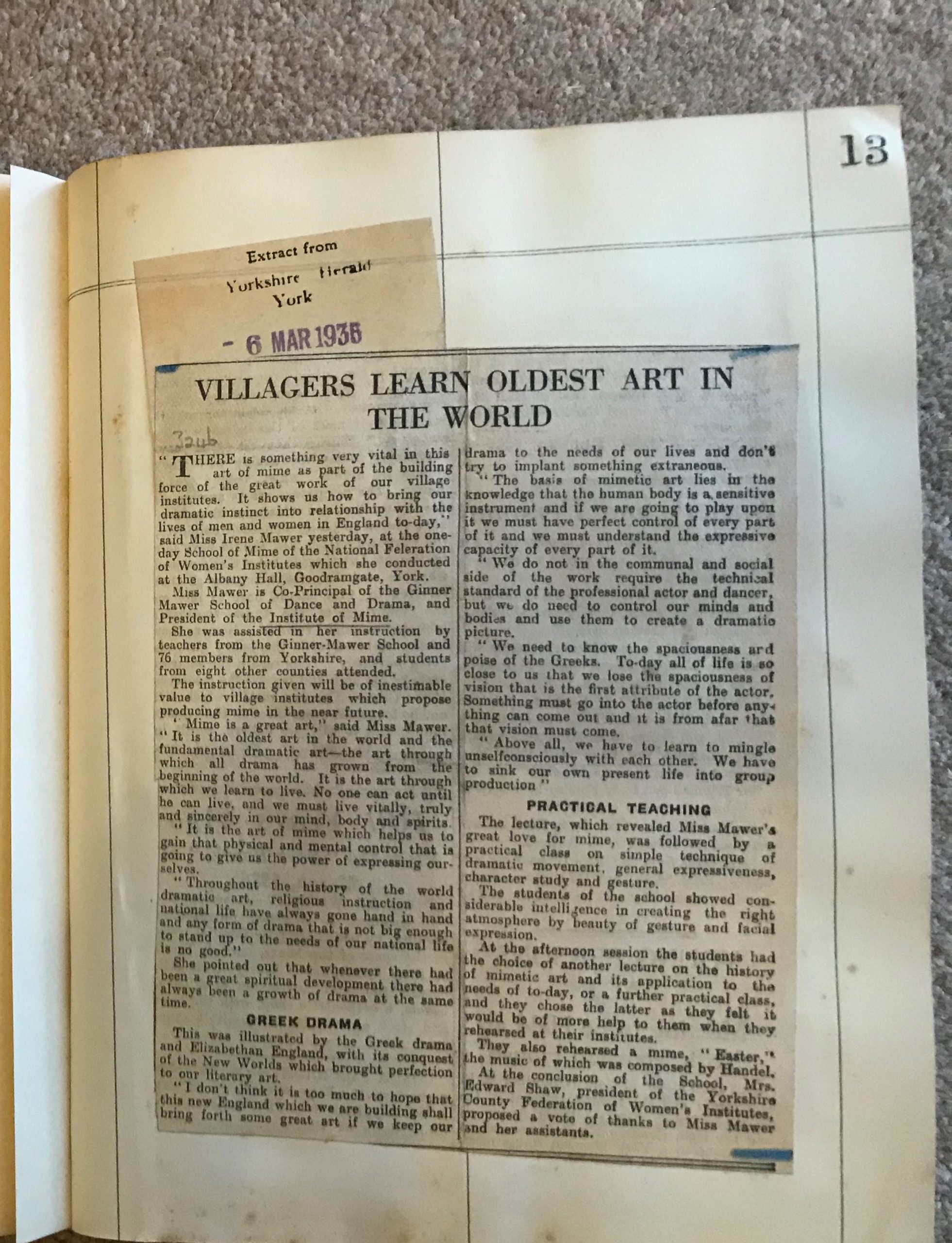Villagers Learn the Oldest Art. 1935
Yorkshire Herald, York
6 March 1935
VILLAGERS LEARN OLDEST ART IN THE WORLD
This blog post continues the series of items which explores some of the newspaper clippings which Irene Mawer gathered throughout her career.
When this article was published in 1935, Miss Mawer would have been in her very early forties (born 13 March 1893) and had been working as a teacher of drama and mime for a good twenty years. She had founded the Institute of Mime two years earlier, and it is the Institute of Mime on which this newspaper article focuses.
The newspaper gives a review of a workshop which Miss Mawer gave in York. It is the same workshop as I wrote about in my previous blog post, and this reporter expands a little more on what Miss Mawer said during her lecture-demonstration.
I find Miss Mawer’s style of speech difficult to understand and I put this down to the era that she lived in, combined with her affluent and genteel background. As far as I can see, Miss Mawer proclaimed mime as the tool by which village branches of the Women’s Institute (WI) could create social change. “It shows,” she says “how to bring our dramatic instinct into relationship with the lives of men and women in England to-day.” Given that the target audience was mainly members of the WI, ie, ‘ordinary’ working class women, it is no wonder that in the afternoon those same women elected to take an extra practical class, rather than choose to listen to another lecture on ‘the history of mimetic art and its application to the needs of to-day.’ I would have made the same choice.
Given that Miss Mawer was assisted by 76 members from Yorkshire, I wonder if my own teacher (then called Mrs Nora Gregorious Brown) was among them? I like to think that she was. In addition, teachers from the Ginner-Mawer School were also in attendance, plus students from eight counties other than Yorkshire. So, all in all, there would have been a wonderful turnout of support for the idea of bringing mime as an educational tool to the North of England.
I continue to puzzle over something that Irene Mawer said during this lecture. It was during a section where she stated that each time there was a great spiritual development (eg, Ancient Greece; and then the conquest of the New Worlds by the Europeans in the Elizabethan era) that there was always a growth of drama at the same time.
The part that puzzles me most is “…this new England which we are building shall bring forth some great art if we keep our drama to the needs of our lives and don’t try to implant something extraneous.” I have no idea what Miss Mawer was getting at here and I don’t recall being taught anything about that during my own training. Please do either leave a comment or contact me if you have any thoughts on this. Thank you.
There was one section which resonated with me though, and I was pleased to read “We do not in the communal and social side of the work require the technical standard of the professional…” I take this to mean that anyone can ‘have a go’ at mime and enjoy it and gain something positive from it, with the proviso that the non-professional performer still needs to be able to control their own mind and body and use them to create a dramatic picture. In this way, everyone can gain the benefits of learning mime, even if they don’t go on to be performers.
Thank you for reading this. Please like/share/comment, etc to promote this page in the search engines.

